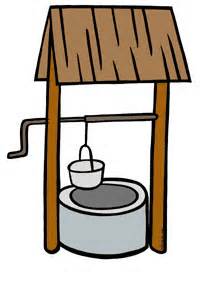Should You Test Your Well?
Editor’s Note: The article below is adapted from a 2013 Water Technology article by Jake Mastroianni. — Hardly Waite.
There are many things in life that are taken for granted, the quality of one’s drinking water should not be on that list. Well water testing, is a great way to get that sense of clarity about one’s water.
There are several different suggestions for when you should test, who should do the testing, why you should test, where you should test and what type of treatment to use if the testing comes back with negative results.
When you should test
The correct time sequence for testing varies based on different testing equipment, the type of well and location. The Environmental Protection Agency says private well owners should have their water tested at least once a year.
Mike McBride, marketing manager for Industrial Test Systems Inc., agrees with that concept. “Customers should have well water tested once a year,” he notes. “Immediately test if there is a noticeable change in the water’s taste, smell or appearance.”
Obviously, if there is a noticeable difference in a customer’s water supply, it would be a good time to have a water test performed. There are also precautions when installing new wells.
“We recommend having a complete series of tests run on a new well,” says Charlie Gloyd, market manager for water conditioning at LaMotte Company. “Depending on the results, we recommend that a new well be monitored quarterly for the first two years of operation. If the well is in good shape, continue to monitor every six months to a year.”
Marianne Metzger, business manager for National Testing Laboratories Ltd., also offers some advice on new and inactive wells. “For new wells, or wells that have sat inactive for many years, a comprehensive test should be considered to document the water quality. In addition to the typical analysis of bacteria and nitrate, new wells should be tested for volatile organic chemicals, pesticides and herbicides, heavy metals and radiological levels. Having a comprehensive test done can alert you to problems as well as provide a baseline of water quality for that well in which to compare future results,” she says.
Who should perform the test
While many tests can be performed by the well water owner, tests should be performed by a competent professional when looking for contaminants that could cause health issues.
“Testing for health based contaminants like bacteria, nitrates and arsenic should be done by a certified laboratory,” adds Metzger. “Simple aesthetic contaminants like hardness and iron can be tested on-site by a water treatment professional or with a do-it-yourself home kit.” Metzger emphasizes the fact that having a professional, or even laboratory, perform a complete analysis is the best way to get the most accurate results.
“Some local health departments do testing or can recommend either certified local or regional companies to perform the testing,” says Gloyd. After testing is complete, Gloyd adds that the homeowner or local water treatment company should be able to monitor the water quality.
Why you should test
There are several contaminants that can unknowingly enter the water supply and cause health issues.
“Parameters that should be tested every year include bacteria (total coliforms), nitrates, total dissolved solids and pH levels,” says McBride. “The nitrates test is extremely important before giving well water to a newborn baby. High levels cause a potentially fatal disease called ‘blue baby syndrome.’ Homeowners should also test for arsenic, chloride, hardness, pesticides and metals.”
Bacteria is one of the most common problems found in wells, coming up in 40 percent of private wells tested, according to Metzger.
Here is a list of reasons provided by our experts for why wells should be tested:
- If you have replaced any part of the well.
- At a minimum check pH, iron and total Coliform bacteria.
- If the well is in a rural or agricultural area it is a good idea to check for nitrate, nitrite, arsenic and perhaps pesticides.
- If you notice a significant change in water quality like color, taste or odor.
- Flooding, earthquakes and fuel spills in your area could disrupt well water.
Probably we should add nearby oilfield activity, either drilling or fracking, to the list.
Where you should test for certain contaminants
The location of a well can play a huge factor in determining the type of testing that should be conducted. In different parts of the country some contaminants may be more prevalent than others.
“Your local health department will be able to suggest other potential contaminants based on the locale, such as cadmium, manganese, radon, chlorides, etc.,” says Gloyd. “Secondary factors that are not typically a health risk are copper, hardness, sulfide, total dissolved solids (TDS ) and others, as they can affect palatability.”
What are common problems and treatment options
“The most common problems in wells that require treatment include bacteria, pH, manganese, iron and nitrates,” says Gloyd.
As Metzger mentions, bacteria is one of the most common contaminants found in wells. “The most cost effective way to deal with bacteria is to shock disinfect the well using a chlorine solution,” she notes. “Most health departments will recommend using household bleach, due to its availability and cost, but it would be better to use something that has been NSF approved for use in drinking water.”
Gloyd adds that testing can vary and he recommends asking a local water treatment professional for the best treatment solutions.
More permanent forms of disinfection for water wells include ultraviolet light or a continuous chlorine feed.
Reference: Water Technology.





